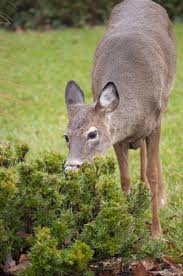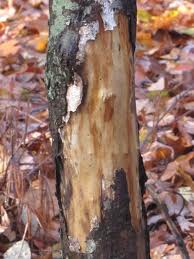Here’s how you can fight back against destructive deer
Increased deer populations, along with the expansion of suburban areas, means more deer are wandering into our neighborhoods. Not only are deer a definite road hazard, but they can do a lot of damage to landscapes too.
Deer tend to shy away from people, but they will browse through your landscape in search of a meal if their natural woodland food sources become scarce or depleted. Plus, they can damage your trees by rubbing their antlers against the bark.
of a meal if their natural woodland food sources become scarce or depleted. Plus, they can damage your trees by rubbing their antlers against the bark.
Deterrents to Try
One approach to discouraging deer is to use plants they don’t like in your landscape (paper birch, common boxwood, American holly, daffodil and English lavender are a few examples). The problem with this approach is that deer will feed on just about any plant if they’re hungry enough.
A more effective approach is to add deer repellents to existing plants. Commercial repellents can easily be found at your local garden or home
goods store, or you might consider making your own repellent using simple bar soap. Soap bars hung in trees at about 6’ height have been proven effective, and they last longer if you leave them wrapped. Simply hang them with wire about 3’ to 4’ apart. It doesn’t matter what kind of soap you use, since deer just don’t like the smell.
Barriers can also be constructed to prevent contact with plants. Deer netting can be wrapped around smaller plantings, or it can be combined with wooden stakes to form a fence around larger specimens. If deer activity is especially heavy on your property, you might even consider having a deer-proof fence installed. These are generally made using woven wire and should be at least 8’ tall to prevent deer from jumping over them.
As beautiful as deer may be, having them hang around your landscape just isn’t good. Taking steps to keep them away will be worth the effort! But remember, it is their home too, do not take violent steps to get rid of deer!



